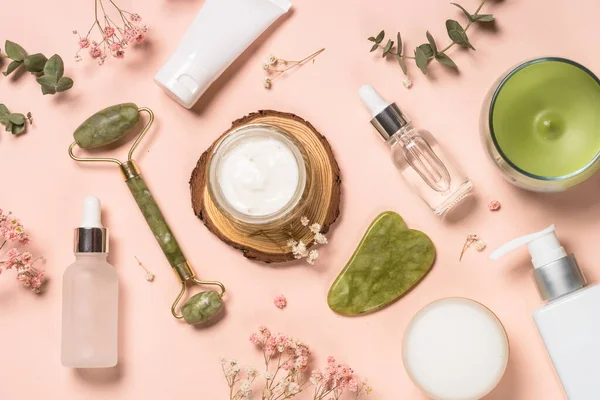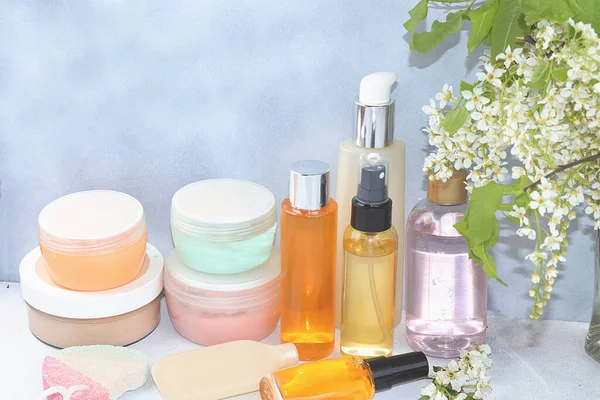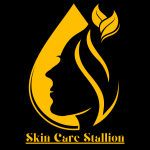“How to Start a Skincare Line: A Comprehensive Guide to Creating, Marketing, and Selling Your Own Beauty Products”
Launching your own skincare line is like creating a symphony of beauty, science, and passion. Imagine transforming your love for glowing, healthy skin into a brand that stands out in a billion-dollar industry, captivating beauty enthusiasts and experts alike.
Whether you’re dreaming of concocting luxurious creams or revolutionary serums, starting a skincare line is not just about mixing ingredients; it’s about crafting an experience, building a community, and sharing your vision of beauty with the world.
Ready to embark on this transformative journey? Let’s dive into the essentials of making your skincare brand the next big sensation.

Table of Contents
ToggleHow To Start A Skincare Line
Starting a skincare line involves understanding your target market, developing unique formulations, ensuring regulatory compliance, and effective branding. To succeed, research current trends, source quality ingredients, and create a strong online presence.
Research and Identify Your Niche
Before launching a skincare line, thorough research is essential. Identify your target audience and their skincare needs. Common niches include anti-aging, organic, acne solutions, and sensitive skin products. Understand current market trends and gaps.
Develop Unique Formulations
Creating unique formulations sets your skincare line apart. Collaborate with experienced chemists to develop products that address specific skin concerns. Use high-quality, safe, and effective ingredients. Popular phrases include “paraben-free,” “sulfate-free,” and “dermatologist-tested.”
Ensure Regulatory Compliance
Compliance with skincare regulations is vital. Research FDA guidelines and regulations relevant to your products. Proper labeling, listing ingredients, and adhering to safety standards prevent legal issues. Use phrases like “FDA-approved,” “clinically tested,” and “hypoallergenic” in your product descriptions.
Create Effective Branding
Branding plays a significant role in the success of your skincare line. Develop a compelling brand story that resonates with your audience. Use consistent and visually appealing packaging. Common branding words include “luxurious,” “natural,” “innovative,” and “effective.”
Build an Online Presence
An online presence is crucial for reaching a broader audience. Develop a user-friendly, SEO-optimized website showcasing your products. Include keywords like “best skincare line,” “natural skincare products,” and “top skincare brands.”
Utilize social media platforms like Instagram, TikTok, and Pinterest to share product launches, tutorials, and customer testimonials. Implement email marketing to keep your audience informed about new products and promotions, driving traffic to your website.
Marketing and Sales Strategies
Effective marketing strategies drive sales and brand awareness. Utilize search engine optimization (SEO) techniques to rank higher in search results. Keywords such as “skincare routine,” “best skincare products,” and “how to clear acne” attract organic traffic.
Collaborate with beauty influencers and bloggers to reach a wider audience. Offer promotions, discounts, and bundle deals to encourage purchases. Tracking and analyzing sales data helps refine your marketing strategies for better results.
Preliminary Research and Planning
Market Research
Identifying Target Market
Understanding your target market is crucial. Identify demographics, psychographics, and buying behavior. Focus on age, gender, lifestyle, and purchasing power. Use surveys and focus groups to gather data. This helps tailor products to meet specific needs.
Analyzing Competitors
Analyze your competitors to gain insights. Look at their strengths, weaknesses, and market positioning. Study their product lines, pricing strategies, and customer reviews. This helps identify opportunities and threats in the market.
Understanding Market Gaps
Identifying market gaps allows you to find unmet needs. Look for areas where competitors fall short. Pay attention to customer complaints and desires. This can guide product development and help position your brand uniquely.
Product Conceptualization
Defining Your Brand
Defining your brand involves creating a unique identity. Consider your brand values, mission, and vision. Develop a compelling brand story. Ensure your brand resonates with your target audience. Strong branding builds customer loyalty.
Identifying Product Types (e.g., cleansers, moisturizers, serums)
Select the types of products to offer. Choose from cleansers, moisturizers, serums, and other skincare products. Consider current market trends and customer preferences. Diverse product types can attract a broader audience.
Establishing Unique Selling Points (USPs)
Establishing USPs differentiates your products. Highlight benefits like natural ingredients, cruelty-free practices, or innovative formulas. Clear USPs make your products stand out. They attract customers and create competitive advantages.
Creating a Business Plan
Executive Summary
An executive summary provides an overview of your business. Include your mission, vision, and objectives. Summarize key elements like target market, product offerings, and financial goals. Keep it concise and compelling.
Market Analysis
Market analysis involves detailed research. Analyze market size, trends, and growth potential. Include competitor analysis and target market insights. This helps validate your business idea and strategy.
Marketing and Sales Strategies
Outline your marketing and sales strategies. Include digital marketing, social media, and traditional advertising. Define your sales channels, such as online stores or retail partnerships. Effective strategies drive brand awareness and sales.
Financial Projections
Financial projections estimate future revenue and expenses. Include profit and loss statements, cash flow forecasts, and break-even analysis. Accurate projections are vital for securing funding and managing finances.
Operational Plan
An operational plan outlines daily business operations. Detail production processes, supply chain management, and quality control. Include staffing needs and roles. A solid operational plan ensures smooth business functioning.

Legal and Regulatory Considerations
Business Registration
Choosing a Business Structure
When starting a skincare business, selecting the right business structure is crucial. Common structures include sole proprietorship, partnership, LLC, and corporation. Each structure has its benefits and legal implications. For example, an LLC offers limited liability protection, while a corporation can attract investors.
Registering Your Business Name
Registering your business name is a key step in establishing your brand. Ensure the name is unique and not already in use. Conduct a thorough search through state databases and the U.S. Patent and Trademark Office (USPTO) to avoid conflicts.
Skincare Product Regulations
FDA Regulations (for US-based businesses)
Skincare products in the U.S. must comply with FDA regulations. These rules cover product safety, ingredient listings, and manufacturing practices. Ensure your products are safe and properly labeled. Mislabeling or false claims can lead to severe penalties. Stay updated with FDA guidelines to maintain compliance.
International Regulations (for global markets)
Expanding to global markets requires adherence to international skincare regulations. Each country has unique requirements for product safety, labeling, and registration. Familiarize yourself with the regulations of target markets like the EU, Canada, and Asia. This ensures smooth entry and avoids legal issues.
Labeling Requirements
Proper labeling is vital for skincare products. Labels must include ingredient lists, usage instructions, and any warnings. They should comply with FDA and international standards. Clear, honest labeling builds trust with consumers and avoids legal troubles. Review labeling guidelines regularly to stay compliant.
Claims and Advertising Compliance
Claims and advertising for skincare products must be truthful and substantiated. Avoid making exaggerated or false claims about product benefits. The FDA and FTC regulate advertising practices. Misleading ads can lead to fines and damage your reputation.
Intellectual Property
Trademarking Your Brand
Trademarking your brand protects your business name and logo from infringement. A registered trademark gives you exclusive rights and helps build brand recognition. File for a trademark through the USPTO or relevant international bodies. This legal protection is crucial for safeguarding your brand identity.
Patents for Unique Formulations
If your skincare products feature unique formulations, consider patenting them. A patent prevents others from copying your proprietary blends. This protection can give you a competitive edge in the market. Apply for patents through the USPTO or international patent offices. Protecting your innovations legally can enhance your business value.
Product Development
In the realm of product development, meticulous attention is dedicated to every stage, ensuring excellence from formulation to packaging. Collaborating closely with a seasoned cosmetic chemist, we craft formulations tailored for optimal results.
Sourcing premium-grade ingredients is paramount, guaranteeing quality and efficacy. Rigorous safety assessments are conducted to meet stringent regulatory standards, prioritizing consumer well-being.
Prototyping and testing mark the next crucial phase. Crafting product samples allows for hands-on refinement and enhancement. Stability and compatibility tests ascertain longevity and effectiveness, ensuring consistency in performance.
Consumer trials provide invaluable feedback, shaping the final product to meet diverse needs and preferences.
Packaging design merges sustainability with aesthetics and functionality. Selecting eco-friendly materials aligns with our commitment to environmental responsibility. Designing visually appealing and user-friendly packaging enhances brand appeal and consumer experience.
Compliance with regulatory standards remains non-negotiable, safeguarding product integrity and consumer trust.

Manufacturing
When delving into V. Manufacturing, businesses face critical decisions, starting with In-House Manufacturing versus Outsourcing. Understanding the pros and cons is pivotal. Vetting Potential Manufacturers ensures alignment with quality standards and production capabilities.
Minimum Order Quantities (MOQs) often dictate feasibility and cost-effectiveness. Quality Control Measures are paramount during the Production Process, ensuring consistency and customer satisfaction. Batch Testing validates product integrity and safety.
Scaling Up Production demands strategic planning to meet market demands efficiently. Inventory Management, including Storage Solutions, must accommodate diverse product types and volumes.
Implementing Inventory Tracking Systems streamlines operations and minimizes errors. From choosing the right manufacturer to optimizing inventory, each step influences business success and customer trust.
Branding and Marketing
In the realm of Branding and Marketing, establishing a captivating Brand Identity is paramount. Crafting a compelling Brand Story sets the stage, infusing authenticity and resonance.
Designing a memorable Logo and Visual Identity reinforces brand recognition. Establishing clear Brand Values fosters trust and connection with the audience.
In the digital sphere, Digital Marketing reigns supreme. Building a user-friendly Website enhances online presence and accessibility. Implementing SEO and Content Marketing boosts visibility and engagement. Crafting an effective Social Media Strategy cultivates a loyal following and drives conversion.
Traditional Marketing methods still hold sway in many circles. Print Advertising retains its relevance, offering tangible outreach and brand exposure.
Events and Trade Shows provide invaluable face-to-face interaction and networking opportunities. PR and Media Outreach amplify brand messaging through trusted channels, enhancing credibility.
Influencer and Affiliate Marketing strategies leverage social currency and partnership networks. Partnering with relevant Influencers extends brand reach and credibility.
Creating enticing Affiliate Programs incentivizes collaboration and drives sales. Effective collaboration management ensures seamless execution and mutual benefit.
Sales and Distribution
In the realm of Sales and Distribution, E-commerce stands tall as a cornerstone. From setting up an Online Store to ensuring Payment Gateways and Security, every step is crucial. Handling Shipping and Returns efficiently enhances customer satisfaction and trust, vital for sustainable growth.
Retail Partnerships, another avenue, involve Approaching Retailers with compelling proposals and Negotiating favorable terms. Maintaining strong Retail Relationships is key to fostering mutual success.
International Expansion opens new vistas, demanding strategic Market Entry Strategies. Adapting Products for Different Markets is paramount for resonance and acceptance.
Navigating Logistics and Compliance ensures smooth operations across borders. In essence, Sales and Distribution encapsulate the intricate dance of commerce, where innovation meets strategy to drive business forward.
Launching Your Skincare Line
Launching Your Skincare Line requires meticulous planning and strategic execution to ensure a successful debut in the market.
Pre-Launch Activities involve building anticipation through teasers, product samples, and influencer reviews, enticing customers with pre-orders and exclusive offers.
On Launch Day, coordination of a captivating launch event, coupled with engaging social media campaigns and media coverage, is crucial for visibility and brand awareness.
Post-Launch Strategies focus on gathering customer feedback, monitoring sales performance, and fine-tuning marketing strategies to sustain momentum and foster long-term success.
Emphasizing these steps is essential for a smooth and impactful skincare line launch, capturing the attention of consumers and establishing a solid foundation in the competitive beauty industry.

FAQs
What are the initial steps to start a skincare line?
Begin with thorough market research to understand industry trends and consumer preferences. Define your niche, develop a unique brand identity, and create a detailed business plan outlining your goals, target market, and financial projections. Start formulating your products, ensuring they meet regulatory standards.
Do I need a business plan to start a skincare line?
Yes, a business plan is crucial. It serves as a roadmap for your business, helping you outline your strategy, identify your target audience, plan your finances, and set achievable goals. It also assists in securing funding from investors or lenders.
How do I find a niche for my skincare products?
Identify gaps in the market or specific needs that are not being met. This could be based on skin type (e.g., sensitive skin), age group (e.g., anti-aging), ingredients (e.g., organic or vegan), or specific skin concerns (e.g., acne or eczema).
What legal requirements must I meet to start a skincare line?
You must comply with local and international regulations, including product safety standards, labeling requirements, and possibly obtaining specific licenses or certifications. In the U.S., for example, the FDA regulates skincare products. It’s advisable to consult with a legal expert to ensure compliance.
How do I formulate skincare products?
Formulating skincare products involves researching and selecting quality ingredients that meet your brand’s ethos and effectively address skin concerns. You can work with a cosmetic chemist or a formulation lab to create safe and effective products. Testing for stability and efficacy is also essential.
Where can I source ingredients and packaging for my skincare line?
Ingredients can be sourced from specialized cosmetic ingredient suppliers, both locally and internationally. Packaging suppliers can provide a range of options, from sustainable materials to luxurious designs. It’s important to vet suppliers for quality and reliability.
Do I need to test my skincare products before selling them?
Yes, product testing is essential. This includes stability testing, microbial testing, and dermatological testing to ensure the safety and effectiveness of your products. It helps in avoiding adverse reactions and ensures compliance with regulatory standards.
How do I set pricing for my skincare products?
Pricing should consider the cost of ingredients, production, packaging, marketing, and distribution. Additionally, factor in the desired profit margin and competitive pricing. Conduct market research to understand what customers are willing to pay for similar products.
How can I sell my skincare products?
You can sell products through various channels, such as an online store, marketplaces like Amazon or Etsy, physical retail stores, or pop-up shops. Partnering with beauty salons, spas, and boutique stores can also expand your reach.
How do I handle logistics and inventory management?
Implement an efficient inventory management system to track stock levels, manage reorders, and avoid overproduction or stockouts. Consider using inventory management software. For logistics, work with reliable shipping partners and plan for secure and timely delivery of products.
Conclusion
Starting a skincare line involves a series of well-planned steps that require thorough research, strategic planning, and creative execution. Begin by identifying your niche and target audience, ensuring your product addresses a specific need or gap in the market.
Follow this with detailed research and development, formulating high-quality, safe, and effective products. Secure necessary funding and create a compelling brand identity that resonates with your audience. Pay close attention to legal requirements, including proper labeling and registration.
Develop a robust marketing strategy that leverages digital and traditional channels to build brand awareness and customer loyalty. By meticulously planning each phase, from conception to launch, and maintaining a commitment to quality and customer satisfaction, you can successfully establish and grow a thriving skincare line.

